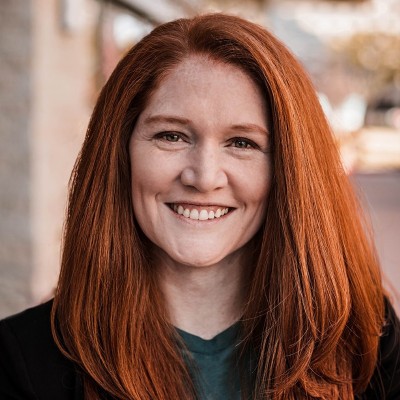- Video Library
- Caitlin Morse, BrainSpace - Automated Intracranial Pressure Management | LSI USA '24
Caitlin Morse, BrainSpace - Automated Intracranial Pressure Management | LSI USA '24

Caitlin Morse
The brain is the one organ we can't transplant. It is what makes us human. And when it gets damaged, we lose a piece of who we are. Personalities change, relationships are lost. 5 million Americans are living with a disability related to traumatic brain injury. 2 million Americans are living with a reversible form of dementia called NPH, mostly undiagnosed. And US stats are just the tip of the iceberg - there are even higher rates of severe TBI in emerging markets around the world with fewer resources to intervene. What if we could wind back the clock and avoid the long-term damage in the first place? Not only for them, but for the family and friends whose world has been turned upside down. Better early intervention to avoid decades of suffering and offer hope is why I founded BrainSpace.
Building successful, industry-shifting businesses is how I am able to keep doing what I love. Advising and investing is how I help more people do it well. Amazing technology and profitable business are table-stakes. Hope and healing is the goal.
The future of healthcare is not just patient-centric, it is people-first. People-first includes family members and caregivers. It includes equitable access to care across geography and socio-economic status, not being bankrupted by a hospital visit. It considers nurses in untenable work conditions and doctors on the verge of burnout. Researchers and scientists stretching their resources to advance our collective understanding. Innovators developing the tools and supplies to make care possible. The services teams who spend every day cleaning blood and other mess from ORs and ICUs to create a safe, sanitary environment for care. The problems are too complex and too urgent to solve one at a time. We cannot simply shift responsibility or blame from one person to another. We must look for solutions that consider the ecosystem and address the needs of the range of all the people involved in healthcare.
Caitlin Morse
The brain is the one organ we can't transplant. It is what makes us human. And when it gets damaged, we lose a piece of who we are. Personalities change, relationships are lost. 5 million Americans are living with a disability related to traumatic brain injury. 2 million Americans are living with a reversible form of dementia called NPH, mostly undiagnosed. And US stats are just the tip of the iceberg - there are even higher rates of severe TBI in emerging markets around the world with fewer resources to intervene. What if we could wind back the clock and avoid the long-term damage in the first place? Not only for them, but for the family and friends whose world has been turned upside down. Better early intervention to avoid decades of suffering and offer hope is why I founded BrainSpace.
Building successful, industry-shifting businesses is how I am able to keep doing what I love. Advising and investing is how I help more people do it well. Amazing technology and profitable business are table-stakes. Hope and healing is the goal.
The future of healthcare is not just patient-centric, it is people-first. People-first includes family members and caregivers. It includes equitable access to care across geography and socio-economic status, not being bankrupted by a hospital visit. It considers nurses in untenable work conditions and doctors on the verge of burnout. Researchers and scientists stretching their resources to advance our collective understanding. Innovators developing the tools and supplies to make care possible. The services teams who spend every day cleaning blood and other mess from ORs and ICUs to create a safe, sanitary environment for care. The problems are too complex and too urgent to solve one at a time. We cannot simply shift responsibility or blame from one person to another. We must look for solutions that consider the ecosystem and address the needs of the range of all the people involved in healthcare.

17011 Beach Blvd, Suite 500 Huntington Beach, CA 92647
714-847-3540© 2025 Life Science Intelligence, Inc., All Rights Reserved. | Privacy Policy







